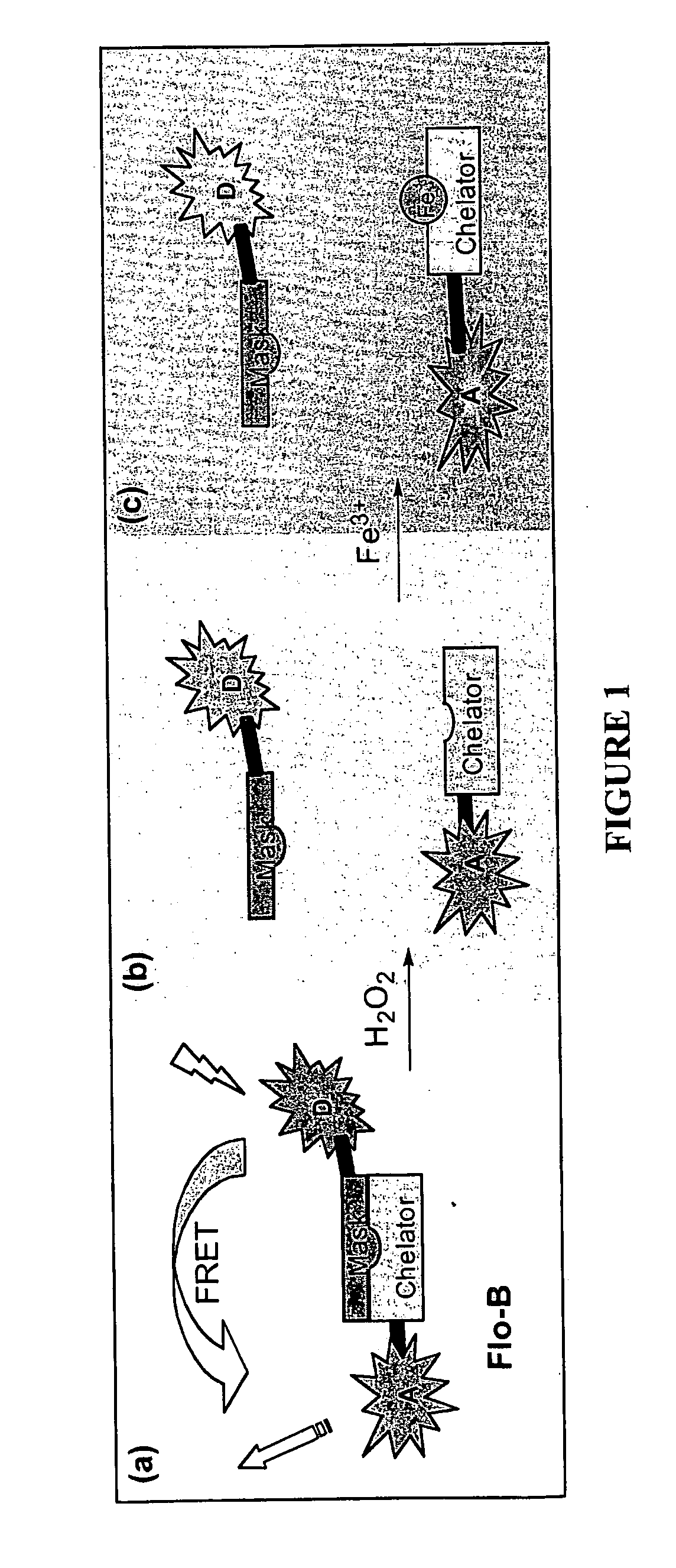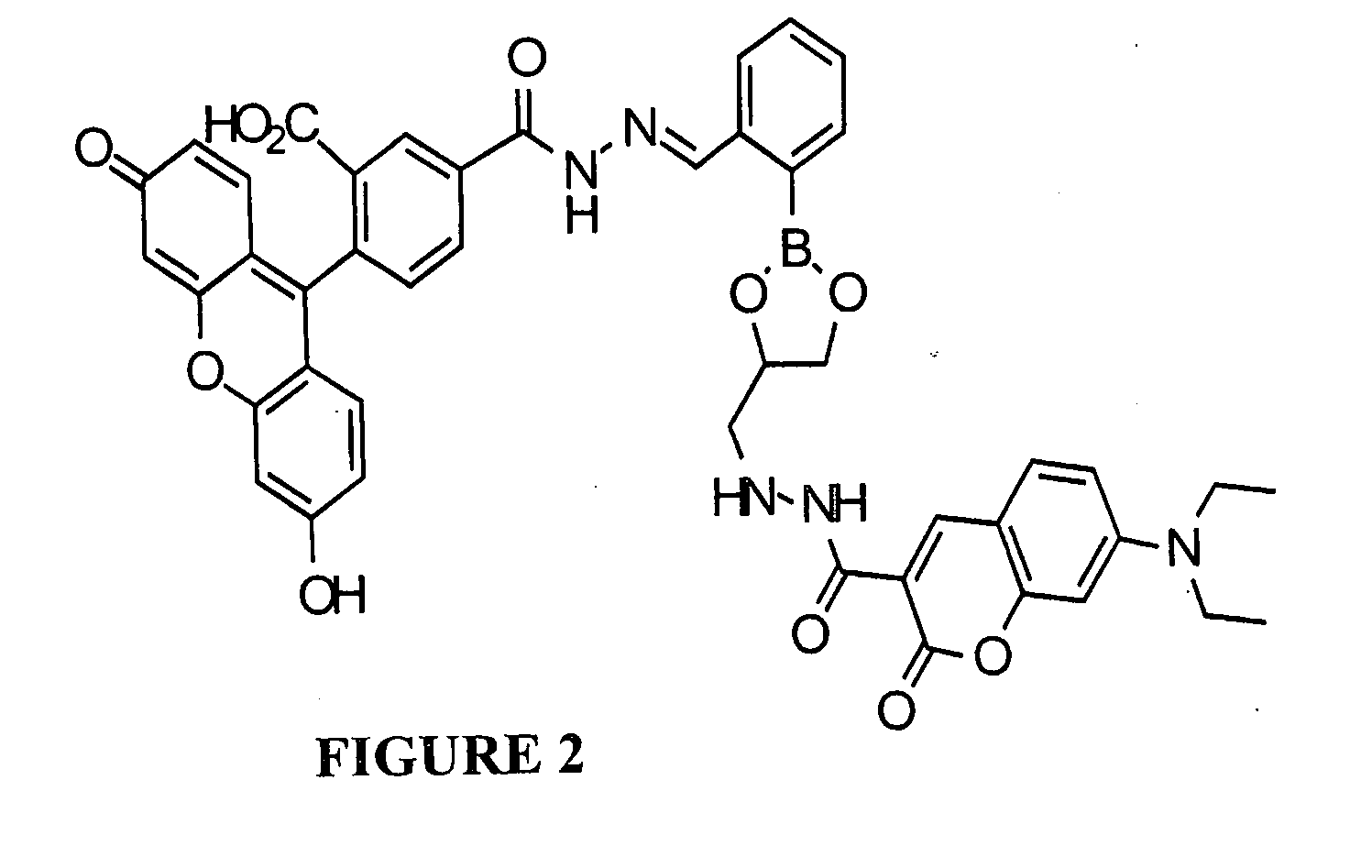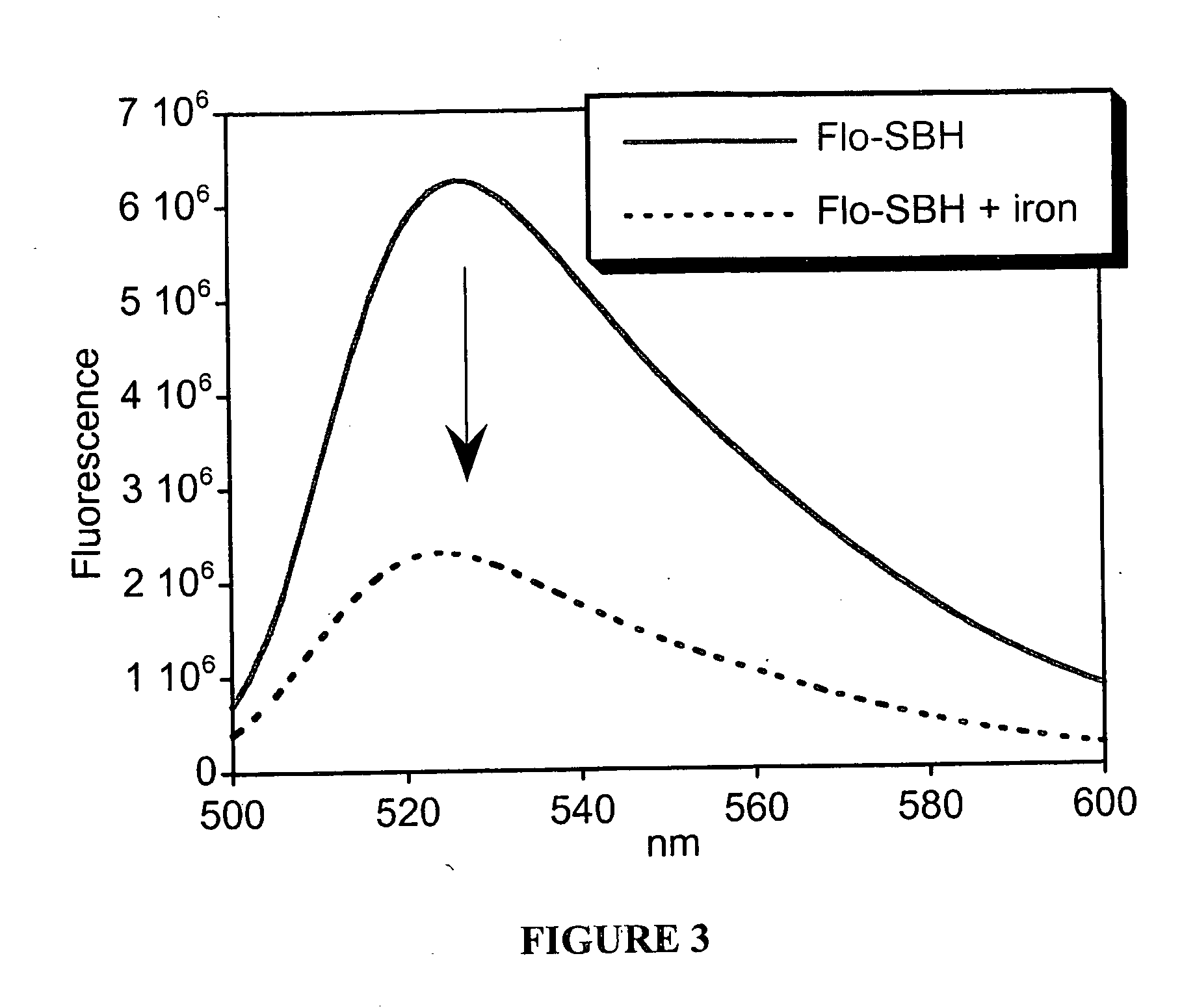Fluorescent prochelators for cellular iron detection
- Summary
- Abstract
- Description
- Claims
- Application Information
AI Technical Summary
Benefits of technology
Problems solved by technology
Method used
Image
Examples
example 1
[0100]Development of the multifunctional sensors relies on choosing appropriate FRET pairs that flank an iron-binding site and a masking group. Our first target probe, Flo-B1 shown in FIG. 2, contains coumarin as an energy donor appended to the boronic ester of the BSBH core, to which fluorescein is appended as the energy acceptor. The coumarin-fluorescein pair provides efficient FRET,13 with excitation and emission wavelengths for coumarin being 420 nm and 468 nm, respectively, while those for fluorescein are 495 nm and 515 nm. The flexibility in the synthetic plan allows us to exchange these fluorophores with more photostable (but more costly) dyes, such as the Alexafluors (Molecular Probes), as we move from in vitro experiments to more demanding cell culture microscopy experiments where photobleaching will be an important consideration.
Synthesis of Flo-B Components
[0101]Before assembling the intact trifunctional Flo-B1, each half will be synthesized independently to allow us to t...
example 2
Synthesis of Flo-B Iron Probes
[0104]
[0105]Step 1:
[0106]Step 2:
Iron Binding
[0107]Solutions of 20 uM Flo-SIH (also referred to as Flo-SBH herein), Flo-BIH and Flo-B in 10 mM HEPES / 100 mM NaCi buffer at pH 7.00 were titrated with [Fe3+(NTA)]. The UV-vis spectra show that Flo-SIH readily extracts Fe3+ from Fe(NTA) to form an Fe(Flo-SIH) complex (FIG. 4A), but neither the nonchelating control Flo-BIH nor the pro-chelator Flo-B (FIGS. 4B-C) forms a complex with Fe3+. These data are consistent with the design of the probe to bind iron only in the unmasked form.
Conversion of Flo-B to Flo-SIH by H2O2
[0108]1 mM H2O2 was added to a 20 uM solution of Flo-B and monitored for 2 hours with UV-Vis spectrometry. As shown in FIG. 5, conversion was seen corresponding to oxidation of the boronic ester masking group, revealing the phenol needed for iron binding. Mass spectroscopy of the product confirms that Flo-B was converted to Flo-SIH.
Iron Induced Fluorescent Quenching
[0109]Addition of Fe3+ quenche...
PUM
| Property | Measurement | Unit |
|---|---|---|
| Fluorescence | aaaaa | aaaaa |
Abstract
Description
Claims
Application Information
 Login to View More
Login to View More - R&D
- Intellectual Property
- Life Sciences
- Materials
- Tech Scout
- Unparalleled Data Quality
- Higher Quality Content
- 60% Fewer Hallucinations
Browse by: Latest US Patents, China's latest patents, Technical Efficacy Thesaurus, Application Domain, Technology Topic, Popular Technical Reports.
© 2025 PatSnap. All rights reserved.Legal|Privacy policy|Modern Slavery Act Transparency Statement|Sitemap|About US| Contact US: help@patsnap.com



